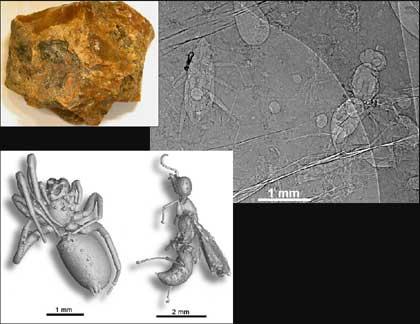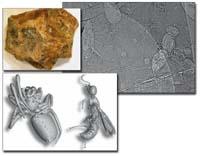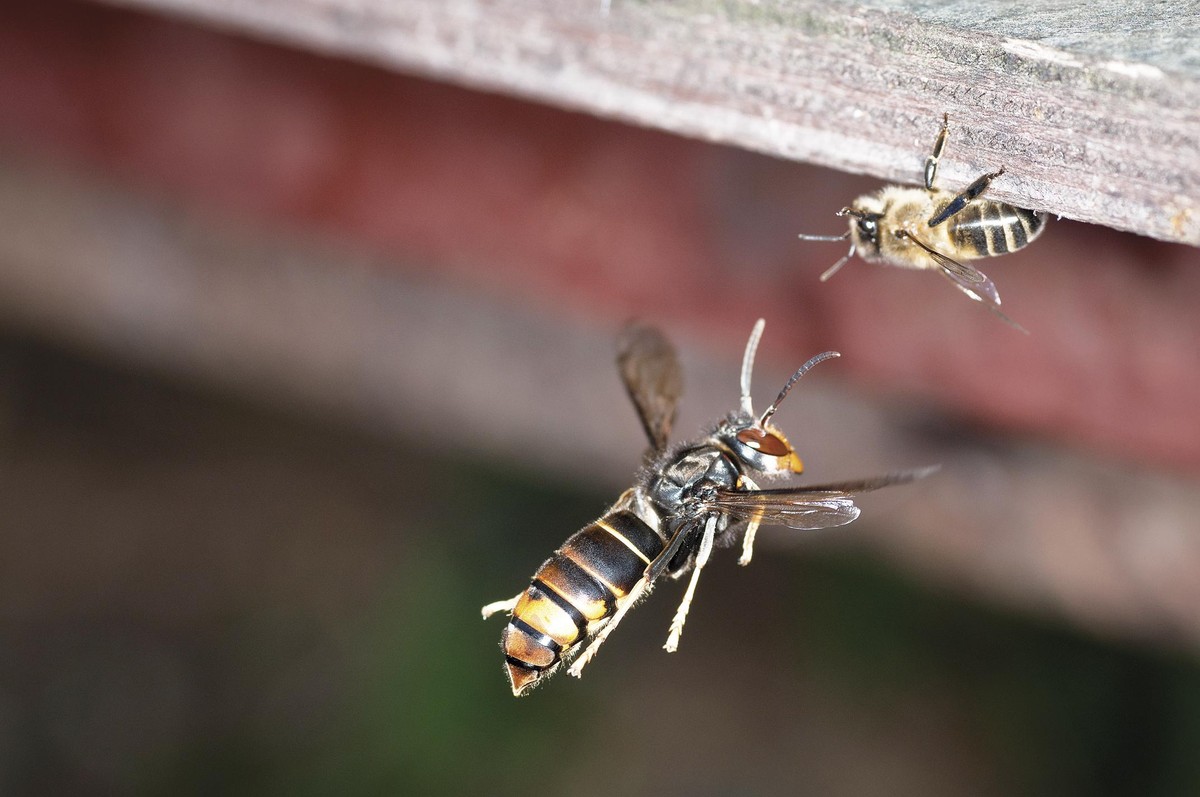Anbar opaco
2008/04/10 Lakar Iraizoz, Oihane - Elhuyar Zientzia

Using a special x-ray technique, scientists at the University of Rennes expose the bowels of opaque amber. We analyzed 640 amber fragments of the Middle Cretaceous and found fossils of 356 animals, from wasps and flies to ants and spiders.
Scientists have long known that amber is a rich source of fossils, as many living beings that once adhered to tree resins have remained in an incomparable state of conservation after their fossilization and conversion into amber. However, most of the amber of some geological times, such as the Cretaceous, is opaque and looks like a piece of rock, so it is impossible to know at first sight what is inside. This unique technique has allowed introducing light into the interior of the amber and, like an x-ray, knowing what it has inside.
Once detected by X-rays, a microtomographic technique was used to construct the three-dimensional images of the animals, that is, they were extracted virtually from amber. Obtaining high-detail images has allowed paleontologists to analyze and describe them with great precision.
Most of the animals found were small. Scientists have explained that larger animals were able to escape the resin and only the little ones were trapped.
Photos: Photos M. Latin America Tafforeau, D. Néraudeau and V. Girard

Gai honi buruzko eduki gehiago
Elhuyarrek garatutako teknologia





